Tag: Students Always
2020 in review: A year of “beyond yourself”
If ever there was a year that called on all of us to embody the Berkeley Haas Defining Leadership Principles, it was 2020. It so happened that this tumultuous year also marked the 10th anniversary of codifying these principles, which have become deeply embedded throughout our school over the past decade.
This year, many in our community went beyond themselves to help those struggling with pandemic impacts, while others questioned the status quo, speaking out against racial inequities and violence against Blacks and African Americans. Others showed confidence without attitude in sharing expertise and skills to help small businesses or solve other problems related to the pandemic. And we were all reminded to be students always as we adapted to life online.
While 2020 challenged us in many ways, it also taught us that a global pandemic can bring out the best in ourselves and our community, and there is a lot worth recognizing—and even celebrating—as the year comes to a close. Here’s what we’ll remember.
Black Lives Matter
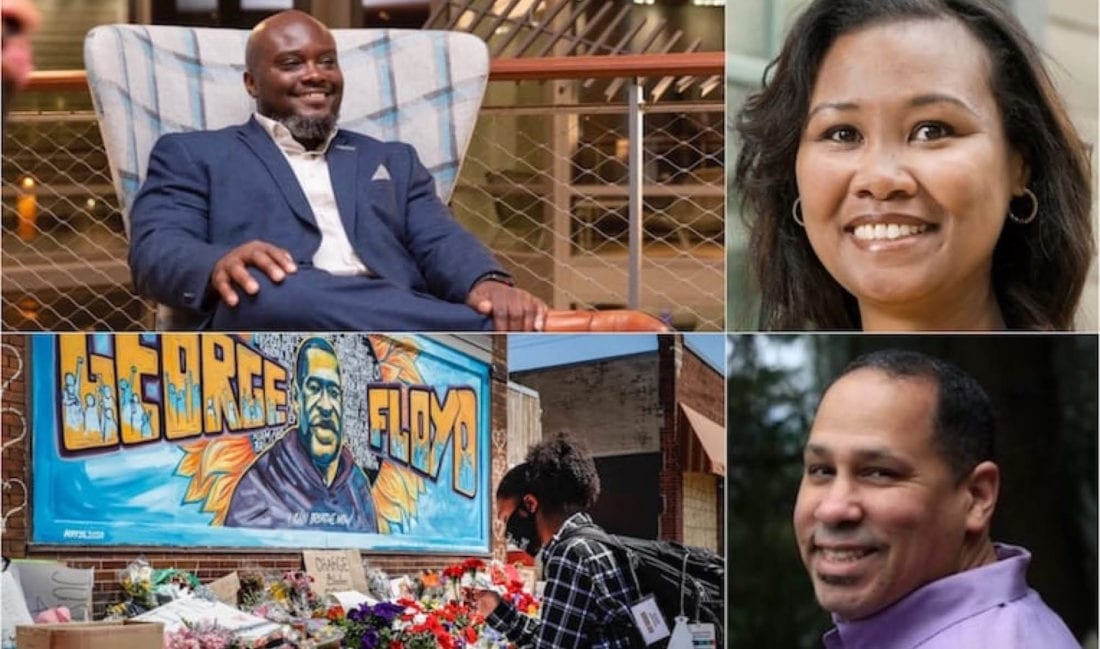
As waves of protests swept the country in response to the murder of George Floyd, Breonna Taylor, and Ahmaud Arbery, Haas community members spoke out publicly about violence against Blacks and African Americans, sharing deeply personal narratives of anguish, frustration, and devastation. “If you read no further, understand this,” wrote Marco T. Lindsey, associate director of Diversity, Equity, and Inclusion at Berkeley Haas, in a widely shared letter to the community. ”Black Lives Matter = if anyone kills a Black person, their punishment should be the same as if they killed someone from any other race.” Responding to BLM, students, faculty, and staff rallied together, leaning on each other for support. They raised funds to rebuild damaged Black-owned businesses and for racial equity organizations, and embarked on personal journeys toward allyship through campus study groups, anti-racist challenges for students and staff, and “Ask Me Anything” sessions.
Students stepping up

Among the notable 2020 projects were the Berkeley Community Business Partnership, led by Lokilani Hunt, MBA 22. As president of the group, Hunt led 60 MBA students who worked with local community groups to offer consulting support to small Bay Area businesses. Their work ranged from organizing a worker-owned cooperative for struggling restaurants to developing new financing pipelines for women-owned businesses to helping small grocers build their online presence and upgrade their payment systems. The effort builds on a project launched last spring by the Sustainable and Impact Finance (SAIF) initiative at Berkeley Haas. Meanwhile, Peter Gallager, EWMBA 22, a member of the University Development & Alumni Relations fundraising team, helped raise $10 million in three weeks for a pop-up coronavirus testing lab at the Innovative Genomics Institute. Raising that kind of capital can take months or even years to accomplish in normal times. “I’ve never experienced anything like that, but these are unprecedented times and people are responding in unprecedented ways,” he said.
Janet Yellen nominated for Treasury Secretary
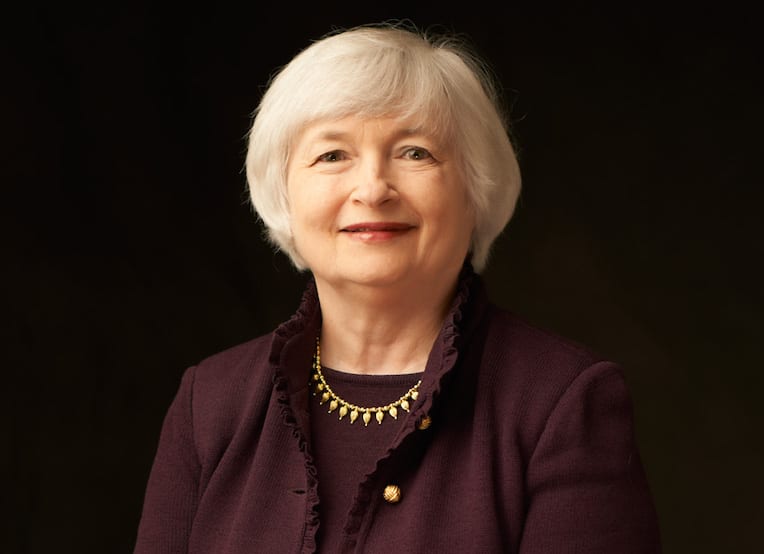
Berkeley Haas Prof. Emeritus Janet Yellen’s career has been brilliant, groundbreaking, and defined by a commitment to public service. Among her many accomplishments: She was the first woman to chair the Federal Reserve Board of Governors, she chaired the President’s Council of Economic Advisors, and she taught thousands of Berkeley Haas MBA and undergraduate students from 1980 to 2006. Now poised to become President-elect Biden’s lead economic advisor at one the nation’s most challenging periods, Yellen is expected to be a champion for all those facing the economic devastation of the pandemic.
Former Dean Laura Tyson, professor of the graduate school and her longtime close colleague, told the Financial Times that Yellen is driven by neither the “power” nor the “kudos” of the position. “She is doing it to serve the public, through the tools she has to understand economic issues.”
The passing of faculty greats
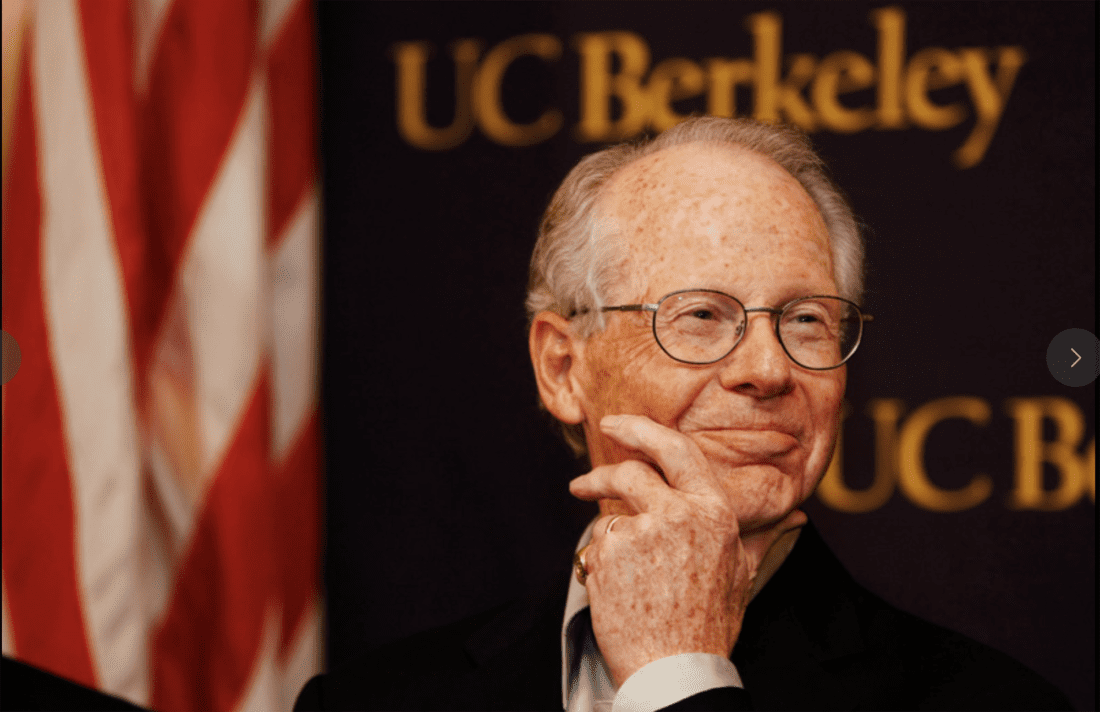
Nobel laureate Oliver Williamson, a pioneer of organizational economics, passed away on May 21 at age 87. Williamson, known to friends and colleagues as Olly, shared the 2009 prize in economics with political scientist Elinor Ostrom of Indiana University for his insight on the “make-or-buy”decision—the process by which businesses choose whether to outsource a process, service, or manufacturing function. “Williamson’s work permanently changed how economists view organizations,” said Prof. Rich Lyons, who was dean when Williamson won the Nobel. “Yet for all of his intellectual creativity, I most often think of Olly as a person who lifts others.”
Last month we also lost Prof. Emeritus George Strauss, who passed away Nov. 27 at age 97. An icon in the field of industrial relations who served as a professor from 1960 until 1991, Strauss helped establish Haas as an organizational theory powerhouse starting in the 1960s. He was a prolific researcher and top scholar of organizational behavior, unions, workplace participation, and comparative industrial relations.
The scramble to move online
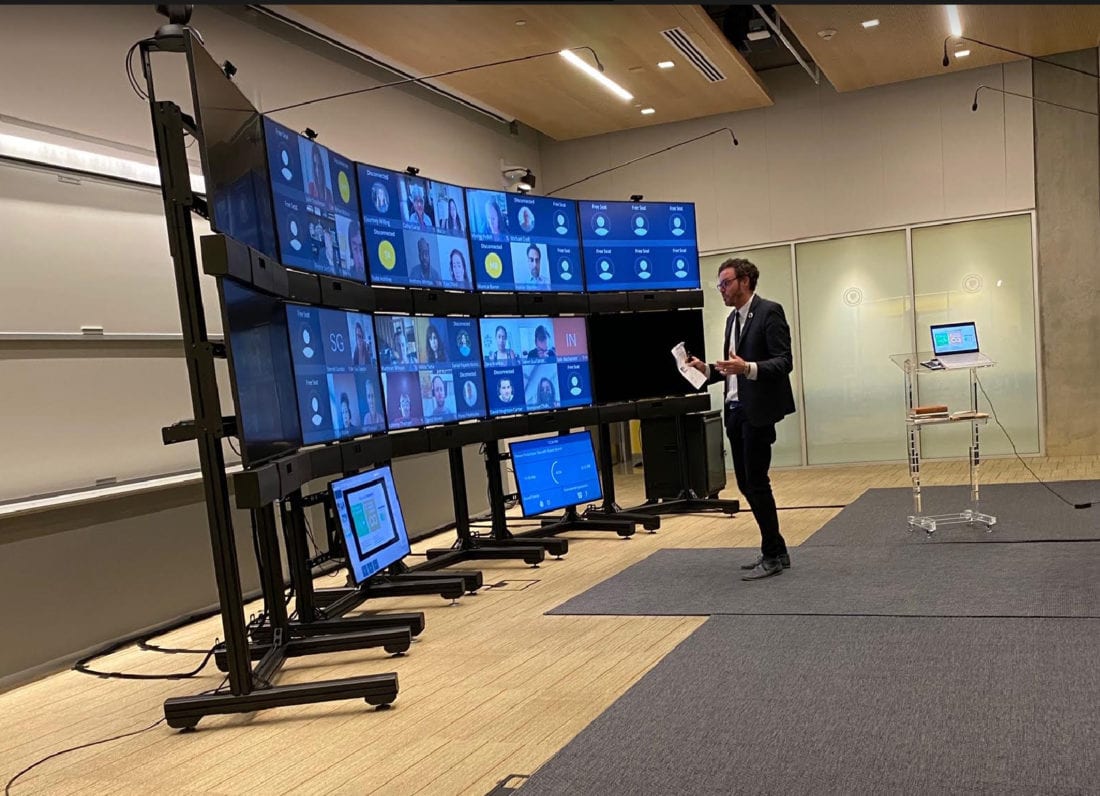
On March 9, it was all-hands-on-deck after Chancellor Carol Christ announced the campus would suspend in-person classes to control the spread of the novel coronavirus. Haas had to move 270 classes online virtually overnight. Faculty members scrambled to adapt, with Haas Digital, graduate student instructors, and other staff working overtime to support them. Those with more experience online stepped up to help colleagues. The work continued all summer, as faculty and staff worked to re-imagine classes, learn online pedagogy, and pre-record asynchronous material, while Haas invested in new technology. Dean Ann Harrison commended the efforts. “After watching our faculty and staff move within 36 hours to online teaching when the coronavirus broke out, I believe there’s little that we can’t do virtually going forward.”
Financial creativity to save small businesses
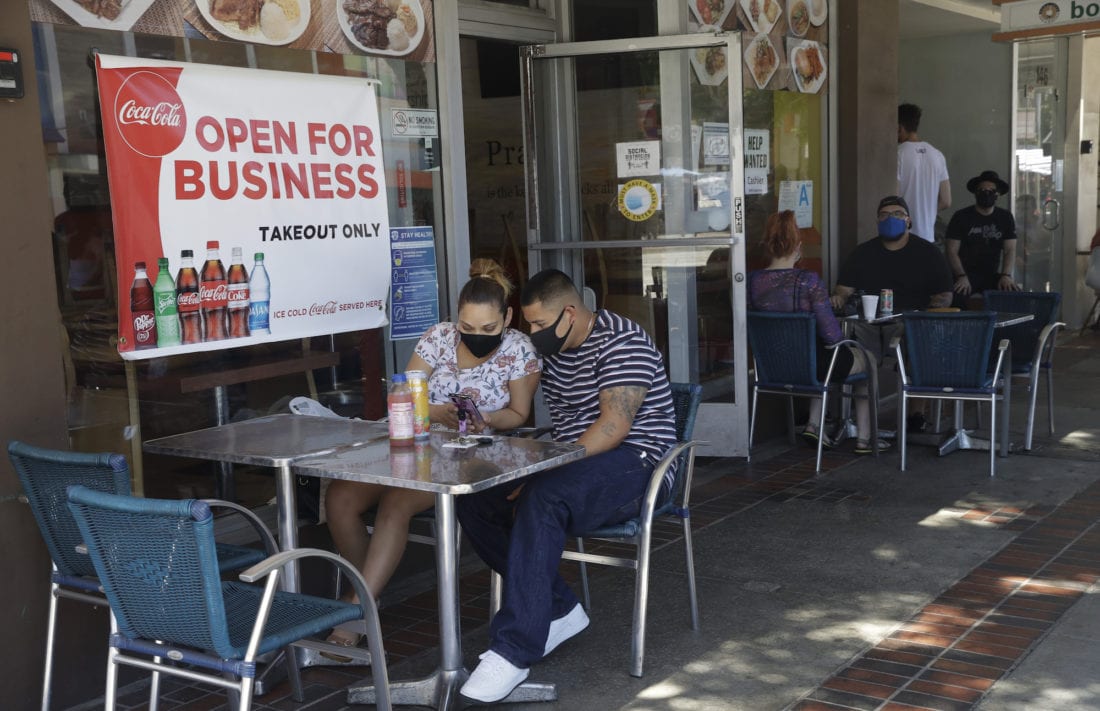
The Haas School of Business and Berkeley Law came together to play a critical role in developing the State of California’s new fund to support small businesses devastated by the coronavirus pandemic. The California Rebuilding Fund, a new public-private partnership operated by the Governor’s Office of Business and Economic Development (GO-Biz), uses government capital to attract private lenders to offer low-interest loans to small businesses—particularly the smallest firms and entrepreneurs from communities that have been historically disenfranchised. Professors Laura Tyson and Adair Morse contributed their finance and policy expertise to the innovative design of the fund. “The state put many groups together to try to get the best of the best ideas,” said Morse, the Soloman P. Lee Chair in Business Ethics. “We all came together to try to optimize a plan for the people of California.”
Researchers contributing to pandemic knowledge
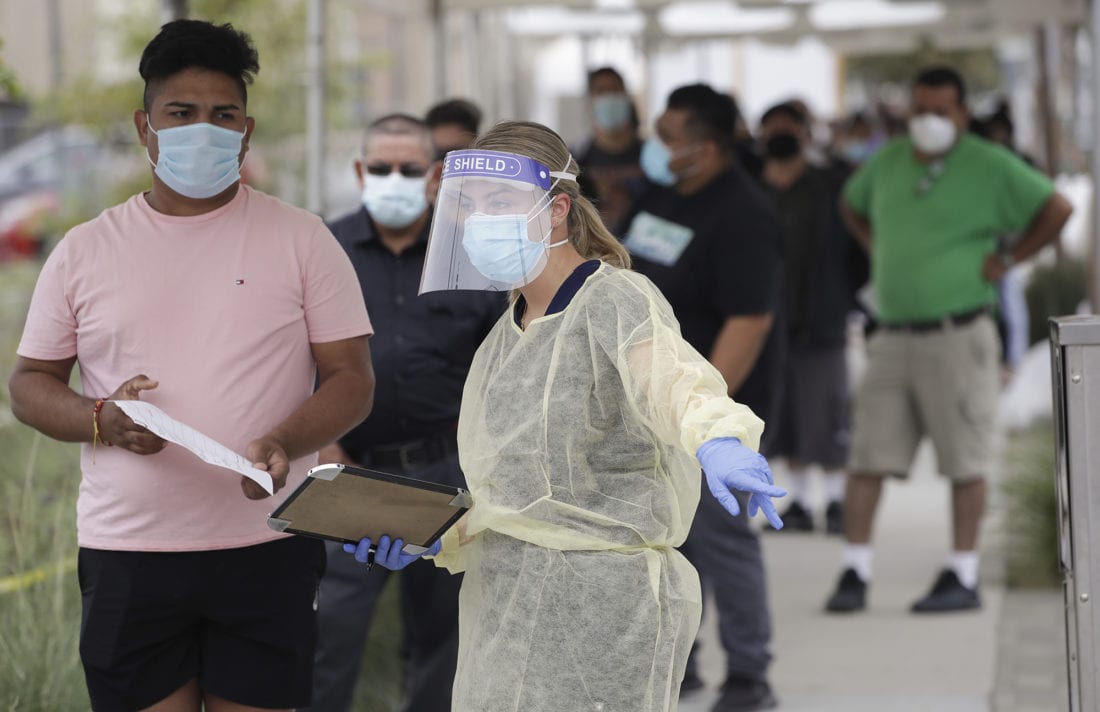
As the pandemic spread, many faculty members used their knowledge and research prowess to shed light on the growing crisis and to search for solutions. Associate professors Jonathan Kolstad and Ned Augenblick laid out a strategy for cheap, mass COVID-19 surveillance testing; Asst. Prof. Abhishek Nagaraj and a team of researchers across four universities built the interactive Reopen Mapping Project to show how different policies affect employment and the number of deaths from the virus; Prof. Pierre-Olivier Gourinchas examined which government policies were most effective in staving off small business bankruptcies in Europe; while Assoc. Prof. Luyi Yang analyzed the optimal way to prioritize who gets COVID tests. Many others generously shared their expertise with the media, wrote commentaries and op-eds, participated in panels and the “New Thinking in a Pandemic” series, and gave lessons on leading through crises for a Berkeley Executive Education video series.
New leaders and faculty

Haas had a banner year for welcoming new leaders to the Dean’s suite, including Loretta Ezeife, chief financial officer; Howie Avery, assistant dean for Development & Alumni Relations; Michele de Nevers, in the newly-created position of executive director of sustainability programs, and Michelle Marquez, assistant dean of Human Resources. On the faculty side, nine new professors, including five women, joined Haas. The diverse, international group hails from Italy, Argentina, France, China, Canada, and California.
Pride in our big wins

Alum Collin Morikawa, BS 19, stunned the golf world last August by winning the PGA Championship, making history as one of the tournament’s youngest winners. Highlights from our many student competitions this year include a FTMBA team win at the Berkeley Haas Spring 2020 Tech Challenge, and a first-place FTMBA finish at the inaugural Oxford Global Private Equity Challenge in March. Yashoraj Tyagi and Akshay Gupta, both MFE 20, took first-place wins in the Moody’s Analytics competition. And another team of MFE students won first place in the Citadel West Coast Datathon. Eugene Kim, Zhuoran Li, Zixuan Chen, and Chen Su, all EWMBA 23, won the inaugural John E. Martin Healthcare Tech Challenge.
Alumni and faculty also netted academic honors, including Matteo Maggiori, PhD 12, who won the Fischer Black Prize—joining previous winner Prof. Ulrike Malmendier as a recipient of the prestigious award for the top finance scholar under age 40. Prof. Martin Lettau won the 2019 Roger F. Murray Prize for outstanding research from The Institute for Quantitative Research in Finance (The Q Group). Prof. David Teece was inducted into the Thinkers50 Hall of Fame, joining management greats Peter Drucker, Clay Christenson, Michael Porter, and his long-time collaborator Ikujiro Nonaka, PhD 82; Teece was also recognized as the top-cited scholar in the field of business and management, while Prof. Ross Levine was No. 10 for economics. Asst. Prof. Ellen Evers of the Haas Marketing Group was recognized with the Carol D. Soc Distinguished Graduate Student Mentoring Award, UC Berkeley’s premier award for graduate mentorship. Prof. Annette Vissing-Jørgensen was honored by the Swiss Finance Institute with its Outstanding Paper Award 2019 for “The Impact of Pensions and Insurance on Global Yield Curves”.
Rankings recognition
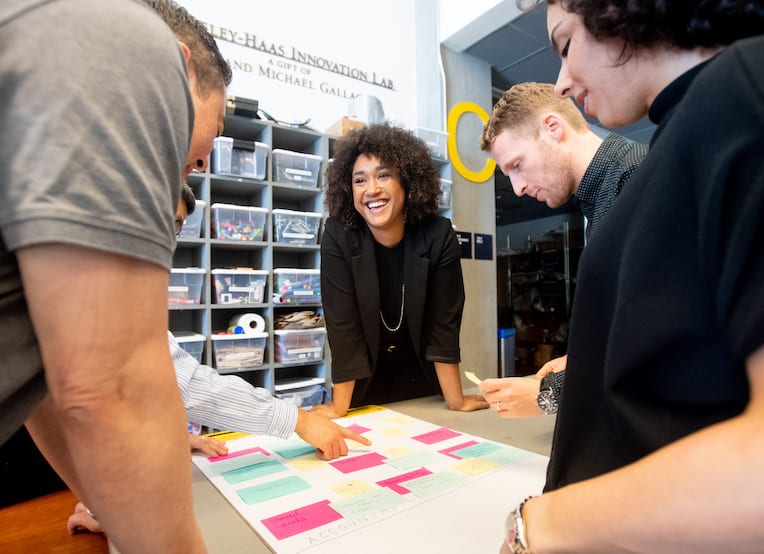
All of our degree programs again ranked in the Top 10 this year. The EWMBA Program ranked #2 and the Full-time MBA Program ranked #7 in U.S. News & World Report’s 2021 Best Business Schools; U.S. News ranked the Undergraduate Program #3. The Executive MBA Program (EMBA) was #1 in the world, according to The Economist; and the Master of Financial Engineering (MFE) Program placed #1 in the TFE Times ranking. Haas continued to climb in the Corporate Knights Better World Ranking, ranking among the very top U.S. business schools for incorporating sustainability into its research and teaching.
Students return to reimagined courses and major technology upgrades
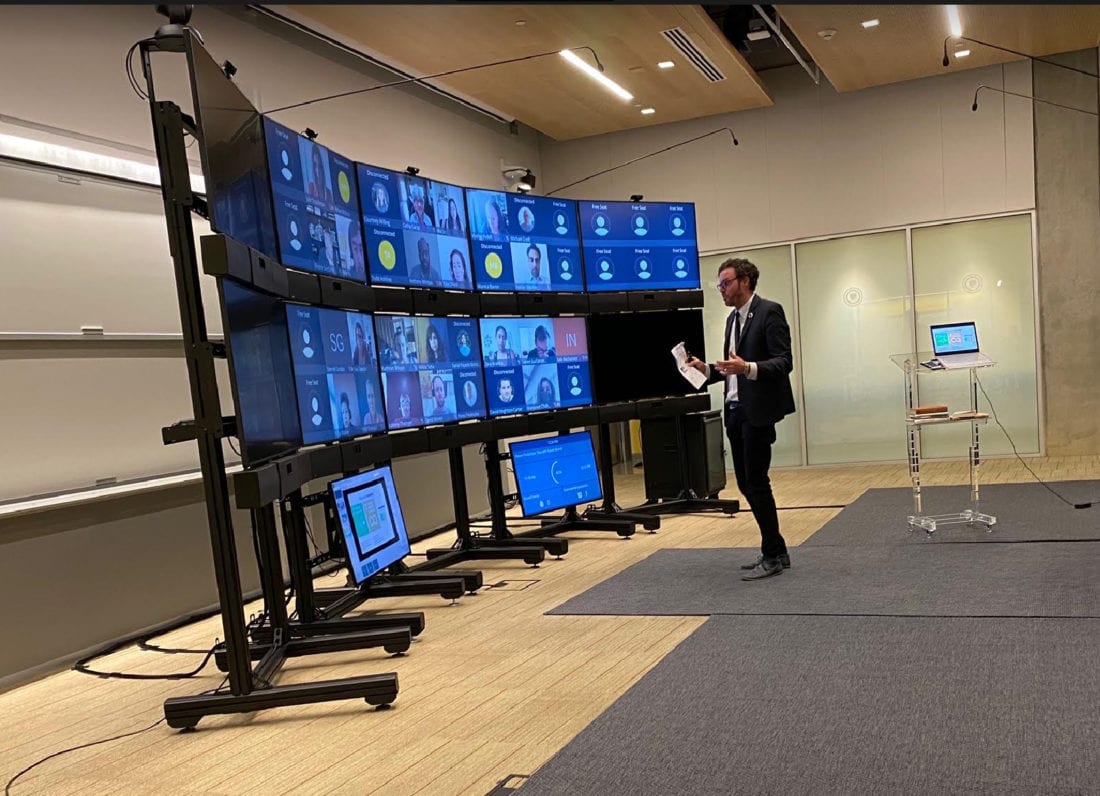
Berkeley Haas faculty spent the summer with a ticking clock and a lofty challenge: to pull apart their courses and rebuild them to give students as rich an experience as possible, during a maddeningly uncertain time.
“It’s an interesting challenge—how to take what’s different about this environment and improve teaching,” said Finance Prof. Terry Odean. “One of the big challenges for the fall semester is helping students feel like they are part of the class, part of the school, and part of a group of students.”
It’s an interesting challenge—how to take what’s different about this environment and improve teaching. —Prof. Terry Odean
When students begin class this month, they’ll benefit from the hundreds of hours Odean and the rest of the Haas faculty have spent on redesigning their classes with a single goal in mind: creating a top-notch academic experience focused on maximizing student engagement.
Working to match, and potentially improve upon, some aspects of the engagement level of a live, physical classroom online is no easy feat. It has involved hours of brainstorming, planning, workshop training, and major investments in a host of new technologies to reinvent instruction. It’s been all hands on deck: Dean Ann Harrison said she’s proud of the work the faculty, graduate student instructors, and the Haas Digital and Exec Ed Digital teams have done over spring and summer. “After watching last spring when our faculty and staff moved within 36 hours to online teaching when the coronavirus broke out, I believe there’s little that we can’t do virtually going forward,” Harrison said. “Their hard work has opened up so many other opportunities for the future of teaching at Haas.”
A different experience
“We’re very excited to debut what we’ve learned and implemented,” added Prof. Catherine Wolfram, associate dean for academic affairs & chair of the faculty, who is overseeing the transition with Prof. Jennifer Chatman, associate dean for learning strategies, and Jay Stowsky, senior assistant dean for instruction. “I think this will be many cuts above what students saw in the spring, and they’ll be pleasantly surprised,” Wolfram said.
While Berkeley’s fall semester officially begins on Aug. 24, students in the evening and weekend MBA program started their first classes last week. Andrew Celin, MBA 22, said he enjoyed his first class taught by Assoc. Prof. Jose Guajardo from one of the classrooms at Chou Hall upgraded for virtual teaching.
“The difference in learning experience was immediately evident, and I think it put everyone into the mindset that we were truly in class and not on a webinar call,” he said. “The camera was following Prof. Guajardo around the room as he moved and used different whiteboards. Having the option to simultaneously view a slide and see the professor at the whiteboard added tremendously to understanding and keeping students engaged after a full day’s work.”
Here are details of some of the innovations:
- Launching virtual classrooms: The school has improved existing classrooms and invested in four new state-of-the-art “virtual classrooms” in conjunction with UC Berkeley Executive Education. Two of the classrooms will be used for executive education programs, and two by the MBA programs for core classes. The setup includes multiple cameras installed at various angles, allowing students to choose their view of the instructor; a digital whiteboard which instructors can use in person and students can write on remotely; and a curved wall of high-resolution monitors and directional speakers where the instructor can see and hear up to 84 students at once. Mike Rielly, CEO of Berkeley Executive Ed, said these virtual classrooms were designed to simulate a live classroom environment as closely as possible. Senior Lecturer Homa Bahrami of the Management of Organizations Group said the setup works well for her because she can easily use a whiteboard and move around while she teaches. “It creates intimacy,” she said. “I can walk up to students and engage with them.” In addition to the four new virtual classrooms, faculty can also host Zoom classes from Chou Hall classrooms that have undergone technical upgrades for virtual teaching. Instructors have access to automated cameras, high-speed internet, and all the traditional aspects of a classroom, and they can see students on newly installed large monitors.
- Creating small student groups to engage with professors: To increase engagement, small groups of students will have the opportunity to meet weekly with a faculty member for a one-hour check-in. Half the ladder faculty have already signed on to participate in this new Faculty-Student Engagement Series (FSES), which invites students to discuss anything from current events to the faculty member’s research to how students are coping with shelter-in-place, Chatman said. “The goal, in lieu of the fact that there won’t be in-person interactions between students and faculty, is to really get to know that faculty member,” Chatman said. Bill Pearce, the Haas chief marketing officer and a professional faculty member in the Marketing Group, scheduled more than 100 individual Zoom meetings with students between mid-March and May. Going forward, he said the Faculty-Student Engagement Series will be a valuable additional way to replace the time before or after class students often spent with faculty before the pandemic.
- Investing in high-quality asynchronous content: Faculty have invested many hours in improving the production quality of the lectures they are recording (lighting, sound, and graphics), Chatman said. In the “flipped classroom” approach that is considered a best practice for online instruction, students are typically asked to watch lectures in advance and to be prepared to discuss the content, take quizzes, or move into breakout groups during class time. Odean, a veteran of online content creation, built a home studio, with special lighting and cameras, where he filmed the 50 videos he uses with his course. “It’s a lot of work, a shocking amount of work,” said Odean.
- Applying learnings from workshops to online teaching: Over the summer, more than 120 faculty members, GSIs and staff took part in four different workshops offered by the Haas Digital team—ranging from beginner to advanced levels. Haas Digital Executive Director Sara Sieteski said her group’s goal was to help the faculty improve student engagement, no matter what their level of online expertise. Key to that success, she said, was getting them to think about a live session as if it were a radio program. “Every minute is scripted out,” she said. “Dead air kills a class just like dead air kills radio.” To that end, faculty members will be relying more than ever on their graduate student assistants (GSIs), who are key to making classes flow smoothly—reading student questions from the chat, making sure students are called on, and helping with online quizzes and polls.
- Zooming, with all the bells and whistles: In Haas Digital workshops and at home, faculty have been learning how to use Zoom features more effectively to break up classroom time. “The one issue that I am concerned with going into the classes is what we are calling ‘Zoom fatigue,’ said Shruti Sethi, EWMBA 23, who starts classes Aug. 8. To combat fatigue, faculty will be adding more games and simulations, and more class time devoted to discussions rather than lectures, Chatman said. Veselina Dinova, a professional faculty member who teaches finance, said she’s using the breakout rooms more to allow students to get to know each other and discuss specific topics in a small group before opening up discussion with the whole class after the breakout session. She also uses breakout rooms for breaks that allow students to catch up personally. “The feedback has been overwhelmingly positive,” she said. In addition, a new instructional designer, expected to join Haas Digital this month, will work with faculty to add more sophisticated data visualizations to MBA courses. The designer will use Jupyter notebooks, a web-based interactive platform created at UC Berkeley. Prof. Don Moore said he’s already reached out to Sieteski, asking about how he can work with the designer on simulations for his courses.
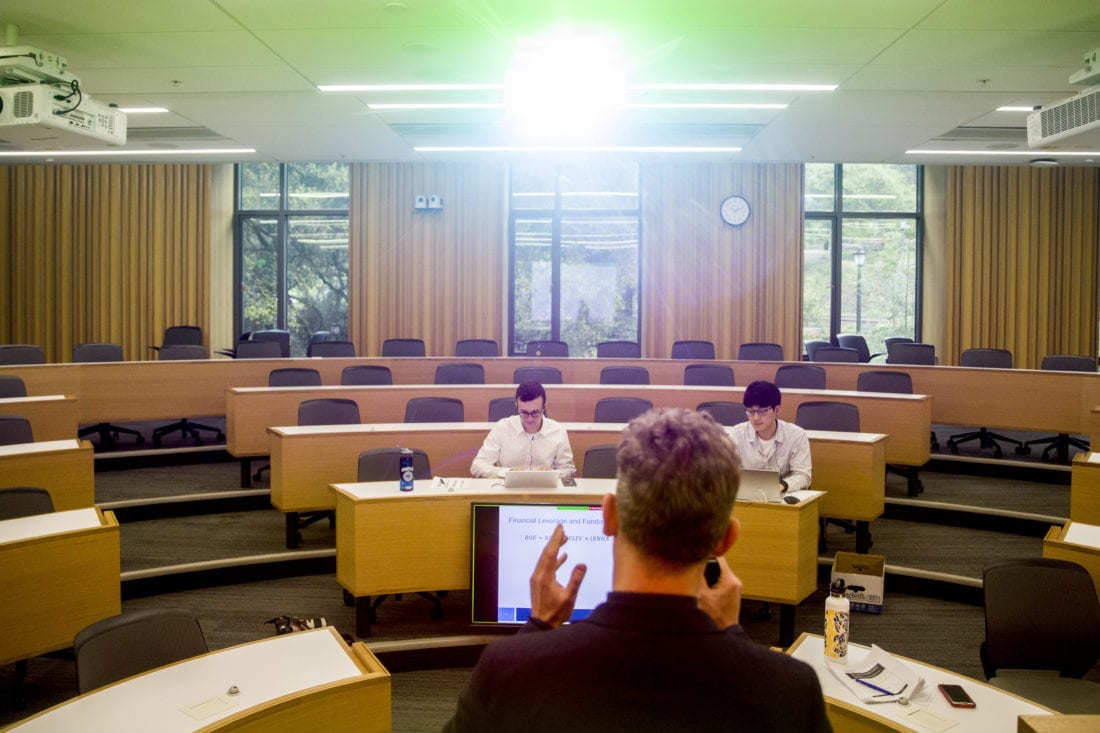
While the Haas School has made significant investments in new technology and training, virtual teaching at Haas isn’t new. Prof. Cameron Anderson pioneered an online version of his popular course Power & Politics in 2012. Since then, he has worked continuously to improve the online version—the latest version, created with Haas Digital, is now the most in-demand elective in the EWMBA program—and has shared his best practices with other faculty members.
Anderson uses online discussion forums, which make up almost a third of the course. “It forces students to think through these issues really deeply in a way that doesn’t happen as often in my in-person class,” he said. “Because of that deeper, critical thinking, I still think my online students learn a bit more than my in-person students.”
It forces students to think through these issues really deeply in a way that doesn’t happen as often in my in-person class. —Prof. Cameron Anderson
There are also big benefits for students who are more reticent in traditional settings, he says. “In a normal classroom, 20% to 30% of the students do almost all the talking,” he said. “In the online class, everyone is chiming in, and I try hard to respond to as many as I can.”
Even so, online teaching can never fully replace the in-person experience, which many students—and faculty—crave, Anderson said. The goal is to return to a hybrid approach that blends online lectures with small-group, in-person discussions as soon as state and local authorities approve.
In the meantime, Haas is “maximizing and taking advantage of things that we can do as a small school,” Wolfram said.
Year in review: Top Berkeley Haas stories of 2019
It was a big year at Berkeley Haas. We welcomed the school’s first new dean in more than a decade, continued our run in the top 10 in all rankings, and launched several new boundary-spanning programs. Our faculty broke new ground and were honored with numerous awards, and we also mourned the loss of several luminaries. The school was also recognized for its stellar sustainability efforts at our new building.
Going into the 2020, our culture—truly at the heart of Haas—will continue to take center stage. Here are a dozen of our highlights from 2019.
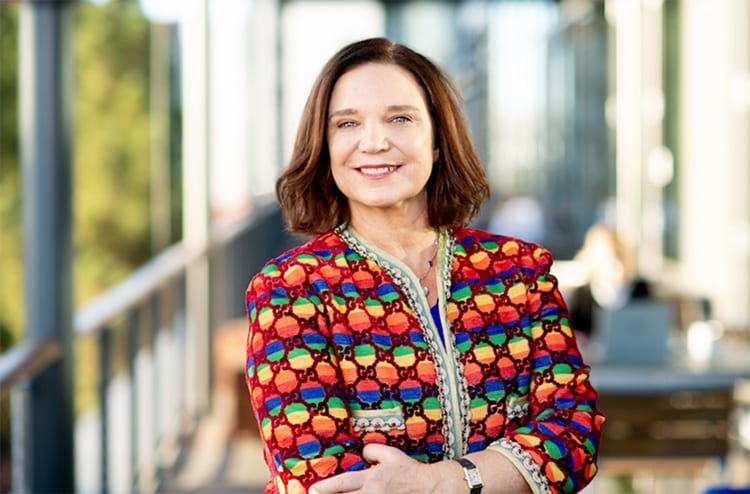
On January 1, former Wharton economics professor Ann Harrison “came home” to Berkeley to serve as the 15th dean of Haas. Harrison was a double major in history and economics at UC Berkeley before going on to earn a PhD in economics from Princeton. She also served as a professor of UC Berkeley’s Department of Agricultural and Resource Economics from 2001 to 2011, and was the former director of development policy at the World Bank.
2. Fresh insights and groundbreaking research

From the first-ever analysis of how hedge funds use satellite images to beat Wall Street, to a finding that information acts on the brain’s dopamine receptors in the same way as snacks, drugs, and money, to new insights from social network experts on how the opioid use spreads in families, Haas faculty questioned the status quo with their creative and groundbreaking research. They also made an impact: Ginnie Mae adopted a proposal based on Haas professors’ research for better risk management of non-bank lenders, and U.S. senators Elizabeth Warren and Doug Jones launched an investigation into evidence uncovered by three faculty that that online lending algorithms have created widespread lending discrimination.
3. Shedding light on PG&E blackouts
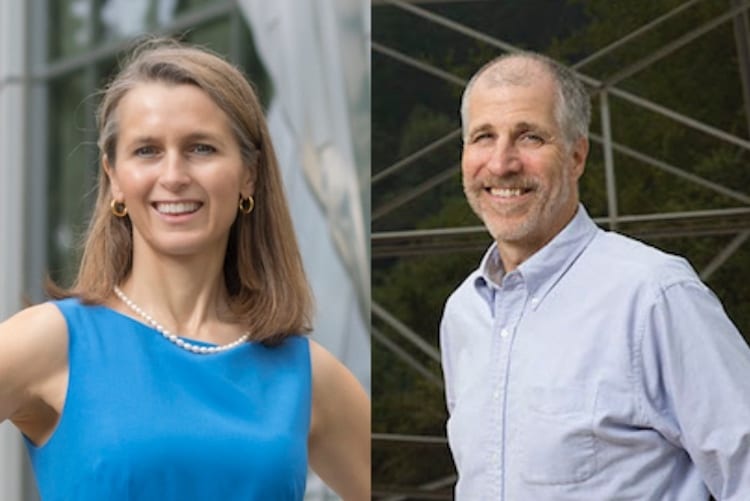
Haas experts were in high demand to make sense of this fall’s unprecedented power shutoffs. Energy economists Severin Borenstein and Catherine Wolfram of the Energy Institute at Haas fielded a stream of questions from journalists after Pacific Gas & Electric determined it could not guarantee the safety of its lines and shut down power to hundreds of thousands of people, including the entire UC Berkeley campus.
4. Mourning the loss of faculty luminaries

Mark Rubinstein (above), a finance professor emeritus whose work had a profound impact on Wall Street by forever changing how financial assets are created and priced, died at 74. Raymond Miles, a former Berkeley Haas dean and professor emeritus whose leadership had a deep and lasting impact on the Haas campus and community, passed away at 86. Leo Helzel, MBA 68, LLM 70, an honored faculty member who guided the school’s first forays into entrepreneurship and was a dedicated and generous supporter of Haas for decades, died at 101. Rob Chandra, BS 88, a professional faculty member since 2013, taught courses on entrepreneurship and venture capital to both undergraduate and MBA students. He passed away in October at age 53.
5. STEM designation for MBA programs
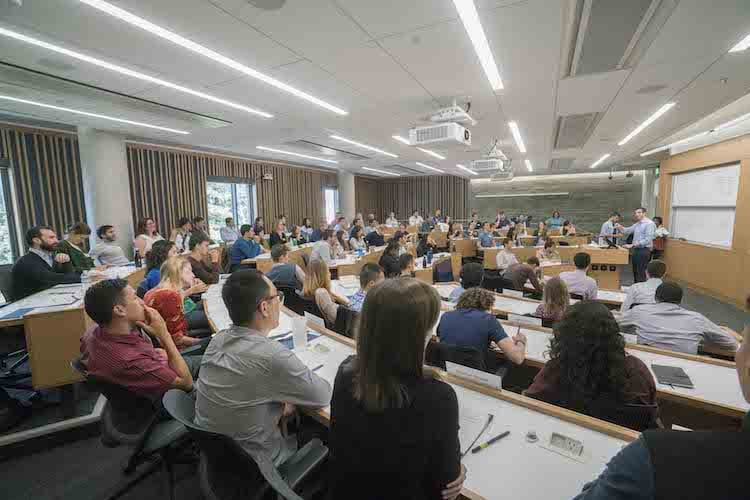
Berkeley Haas is among the first business schools to receive a STEM (Science, Technology, Engineering, and Math) designation for its MBA programs. The designation makes all international graduates eligible to apply for an additional 24-month visa extension during post-MBA employment. All current international students studying on F-1 visas will be eligible to apply for the extension while they are in their first year of work authorization after graduating from the MBA program. “We anticipate that this will lead to expanded opportunities for our international graduates who pursue jobs incorporating business analytics, modeling, forecasting, and other skills developed through our program,” said Peter Johnson, assistant dean of the FTMBA program and admissions.

All Haas programs continued their run in the top 10 in all major rankings, with the full-time MBA program moving up to #6 in the U.S. in the U.S. News & World Report ranking—its highest ever. The FTMBA program was also ranked #6 in the U.S. by The Economist (#7 worldwide) and #8 in the U.S. by Bloomberg Businessweek. U.S. News ranked the Berkeley Haas Evening & Weekend MBA Program #2, the Undergraduate Program #3, and the Berkeley MBA for Executives Program #7. The Master of Financial Engineering Program was ranked #1 by The Financial Engineer, and #2 by QuantNet.
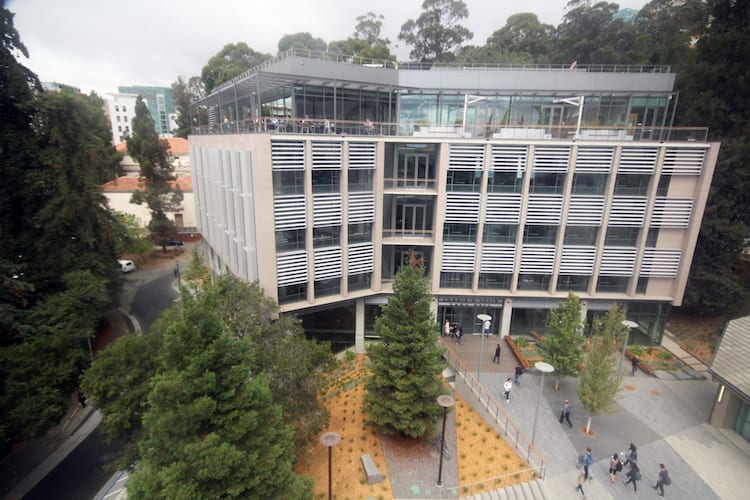
Our newest building officially became the greenest academic space in the U.S., receiving a WELL Certification recognizing its “strong commitment to supporting human health, well-being, and comfort;” a TRUE Zero Waste Certification at the highest possible level for diverting at least 90% of its waste from landfills; and LEED Platinum Certification for its architectural design, construction, and energy efficiency.
8. Welcoming David Porter, our first Chief DEI officer
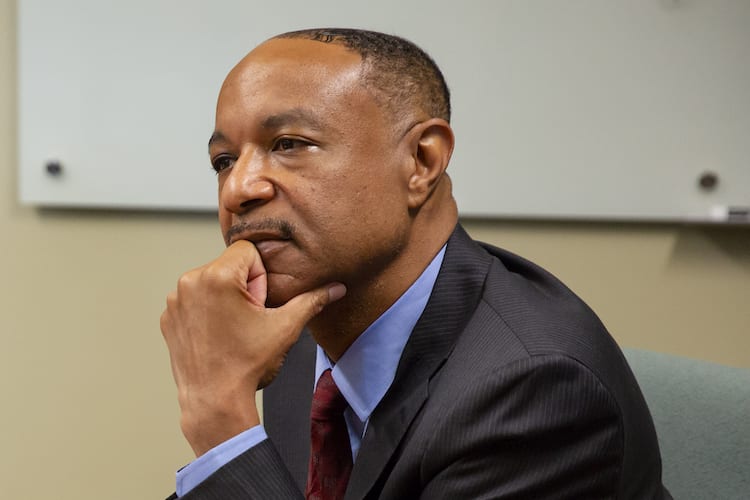
“My first priority is making sure that the students, particularly students of color, have the best experience possible,” said Porter, who previously served as CEO of media nonprofit Walter Kaitz Foundation, director of graduate programs at the Howard University School of Business, and as an assistant professor and faculty director at UCLA’s Anderson School.
9. Unveiling a new sustainable and impact finance program (SAIF)
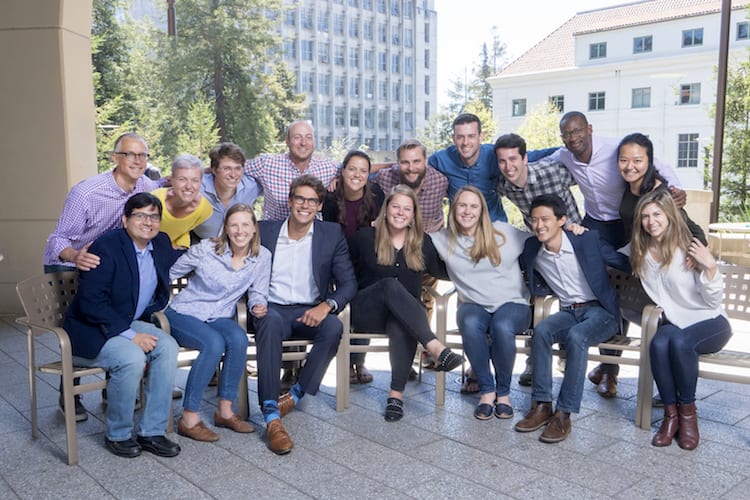
The Sustainable and Impact Finance program aims to better position students to work in sustainable and impact finance as public fund managers or private equity investors, or in the startup world. It’s focused on three sectors: sustainable investment, impact investment, and impact entrepreneurship. Assoc. Prof. Adair Morse developed the new program with Prof. Laura Tyson, faculty director for the Institute for Business and Social Impact (IBSI).
10. Building campus connections with cross-disciplinary programs
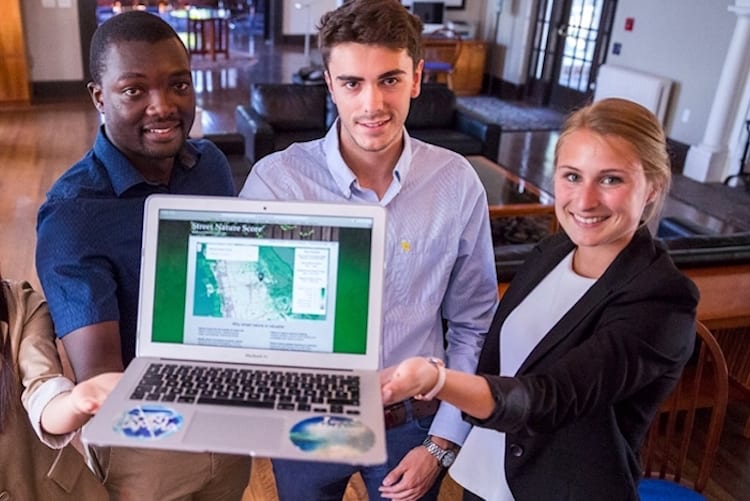
Haas joined forces with the College of Engineering to launch the concurrent MBA/MEng dual degree program. The new program, enrolling for fall 2020, allows students with undergraduate technical training to earn both a Master of Business Administration and a Master of Engineering degree in just two years. The new undergrad Biology+Business dual major is designed to prepare students for careers in healthcare, biotech, and drug discovery research. It’s a joint venture between the Department of Molecular & Cell Biology and Haas.
11. A host of honors for faculty
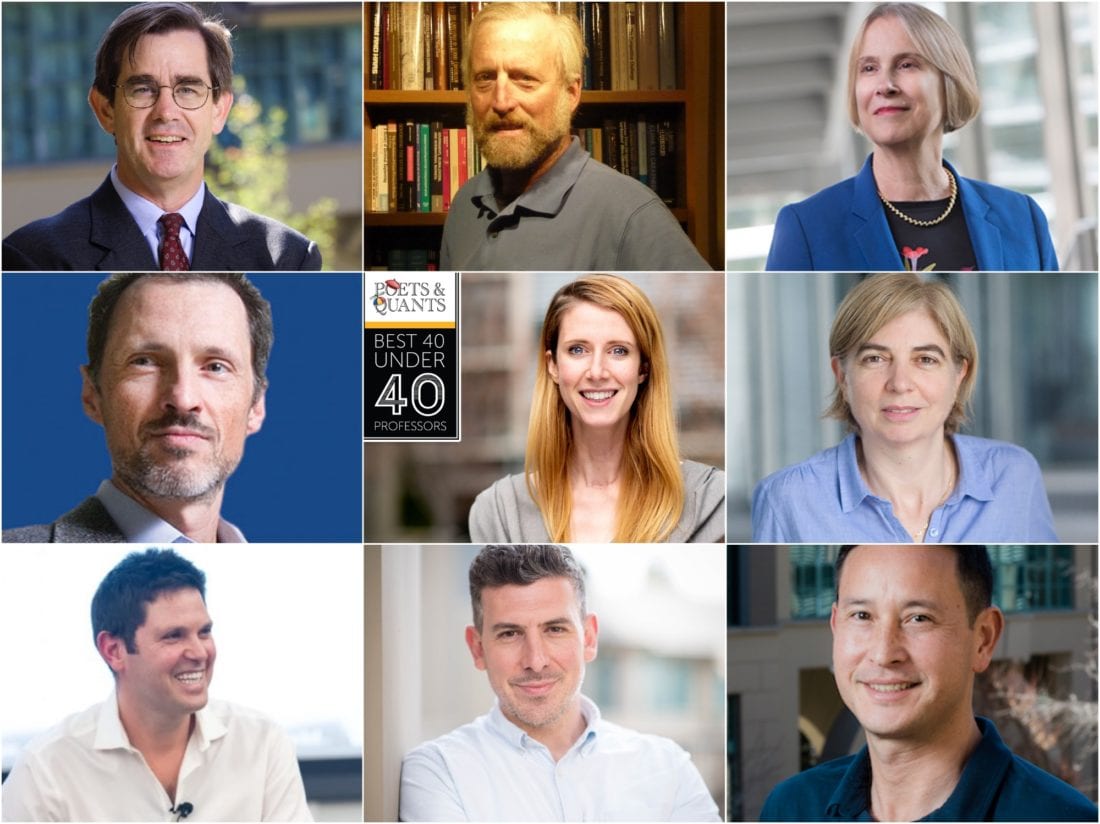
Assoc. Prof. Yaniv Konchitchki and Assoc. Prof. Panos Patatoukas received the 2019 Notable Contributions to Accounting Literature Award from the American Accounting Association. Prof. Emeritus David Mowery received the 2019 Irwin Outstanding Educator Award from the Academy of Management’s Strategic Management Division. Adj. Prof. Henry Chesbrough received the Leadership in Technology Management Award from the Portland International Center for Management of Engineering and Technology (PICMET). Prof. Nancy Wallace was honored by campus with a prestigious faculty service award. Miguel Villas-Boas was awarded the 2019 INFORMS Society for Marketing Science Fellow Award, which is the organization’s highest award recognizing cumulative scholarship and long-term contributions to the marketing field. Prof. Ernesto Dal Bó and Prof. Frederico Finan received the 2019 Williamson Award at the 2019 Society for Institutional and Organizational Economics (SIOE) conference. Assoc. Prof. Juliana Schroeder was recognized as a “Best 40 Under 40” professor by Poets & Quants. Cheit Awards for Excellence in Teaching went to professors Adair Morse, Ross Levine, Yaniv Konchitchki, and Hoai-Luu Nguyen, along with lecturers Janet Brady, Eric Reiner, and Veselina Dinova.
12. Going deeper on culture

We continued to embed our Defining Leadership Principles (DLPs)—Question the Status Quo, Confidence Without Attitude, Students Always, and Beyond Yourself—throughout the school. In January, the Berkeley Haas Cultural Initiative launched with a pioneering conference where executives from Facebook, Netflix, Zappos, Pixar Animation Studios, Deloitte, and other “culture aware” companies mingled with top academics from around the world. Separately, Haas supporters donated over $200,000 to distribute as grants for efforts aimed at keeping our DLPs strong. After reviewing 29 proposals from students, faculty, and staff, grant reviewers funded six projects and initiatives.
Delphine Sherman named as Haas chief financial officer
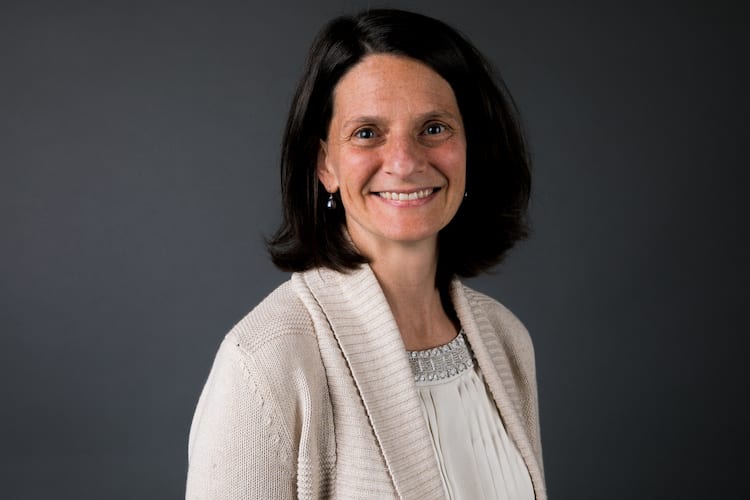
Delphine Sherman, MBA 06, a veteran in education and financial management, has been named the new chief financial officer for the Haas School of Business.
For Sherman, the first day on the job was a bit of a homecoming.
“I am so excited to be back,” said Sherman, who started April 2, 12 years after earning her MBA at Haas. “Walking through the gates on the first day was a little bit surreal.”
Sherman most recently managed a $240 million budget and led 35 staffers at Aspire Public Schools, a network of more than 40 community-based small, college-prep charter schools in California and Tennessee.
She said she’s looking forward to digging into the challenges of the CFO job, where she will work closely with the senior management team, the dean, and the school’s advisory board.
“It’s a very exciting time to see how far the school has come during this really challenging financial time at the university,” she said. “I’d love to capitalize on that and bring in some strategy around what we want our long-range plan to look like—diving into the long-term and where we go from here.”
In a note to the Haas community, Dean Rich Lyons said he was thrilled to announce Sherman’s appointment.
“Delphine brings a breadth of experience ranging from investment management and education consulting, to financial planning and analysis and business strategy,” he said.
A native of New York, Sherman earned her undergraduate degree from Dartmouth College, and moved to Berkeley for the MBA program.
She said her experiences at Haas—and inspiration from classmates—led her to a career in education and finance.
During the Haas interview process she said she was impressed that both Peter Johnson, assistant dean of the Full-Time MBA Program & Admissions, and Dan Sullivan, senior director of academic affairs, both remembered her. “I wasn’t one of those student leaders who was famous on campus, and the fact that they remembered me was so generous and welcoming.”
Sherman has supported Haas in many ways since graduating.
She served on the advisory board of the Center for Nonprofit and Public Leadership, now the Center for Social Sector Leadership, and remained good friends with Nora Silver, the center’s director, over the years. She also spoke on a panel at a Women in Leadership conference, and has hired Haas graduates in her past positions.
She says Haas’ social mission, as well as its Defining Leadership Principles, speak to her—especially Question the Status Quo and Students Always.
“I had heard a lot about the (Defining Leadership Principles) in 2010 and I remember thinking that they completely reflected the experience I had here in 2005 and 2006,” she said. “I thought that it was so smart that Dean Lyons had capitalized on this and made it part of the school’s strategy.”
Sherman replaces Suresh Bhat, who is now CFO of the Hewlett Foundation.
“A big part of why I took this job was because of his enthusiasm and the impact he had on the strategic direction of the school,” she said. “That was really exciting to me.”
Prior to Aspire, Sherman was vice president of client management at EdTec, a finance and professional consulting firm serving over 300 charter schools.
When she’s not working, Sherman said she enjoys running, hiking, and cycling with her family. She lives in Berkeley with her three boys, ages 3, 5, and 7, and her husband, a Berkeley Law graduate.